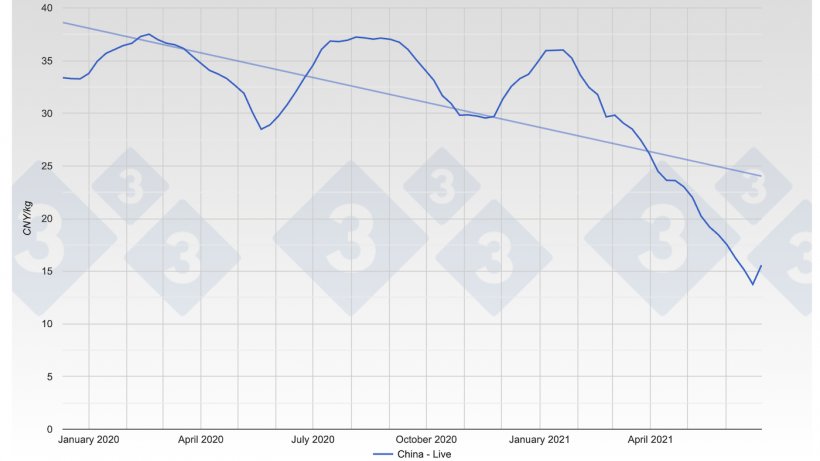Following the resurgence of African Swine Fever (ASF) in China’s hog herd in late 2020, sources shared that producers exhibited greater concern about the spread of the disease. Reportedly, hog producers rushed to sell, causing prices to decline. From January 2021 to the end of June 2021 live hog prices fell by nearly 65 percent due to increased slaughter, low consumer demand, and an abundance of pork availability in the market. As the price for pork declined, so did piglet prices. Sources indicate that breeding farms have responded by culling less productive breeding sows which is affecting piglet production. These trends will decrease the breeding sow population, especially amongst small- and medium-sized producers, while supporting large producers with high efficiency sows.
Further, feed prices in China remain relatively high even though China’s industry is considering varying feed ingredient rations. Finally, restocking commercial hog farms with piglets is being delayed according to industry sources and is expected to result in lower pork production in the second half of 2021. FAS China anticipates that demand for imported pork in the second half of 2021 and early 2022 is expected to remain robust.

Over the past several months, small- and medium-sized commercial hog producers have liquidated overweight hogs (over 250 kilograms), standard-weight hogs (around 150 kilograms), and under-weight hogs as the price for pork dropped. Previously, producers were keeping over-weight hogs as consumers and meat processors found the product desirable. The slaughter of under-weight hogs speaks to industry concerns about disease and falling prices as small- and medium-sized producers closed down operations before animals reached market weight. Sources indicate that losses for professional farrow-to-finish farms have intensified leading to further panic selling. For large-scale producers, the ability to take on short-term losses due to low pork prices has allowed them to continue to maintain production targets. However, sources indicate large producers have also scaled back on the purchase of piglets for breeding and/or scaled back the restocking of hog farms.
Sources noted that certain hog producers (including large-scale producers) now are retaining standard weight hogs for a “second fattening” which is the practice of continuing to feed out hogs after reaching market weight. The second fattening happening now, according to industry contacts is to wait out low pork prices. The feed efficiency for such producers is expected to decline and the pace of restocking their swine herds with younger piglets is anticipated to slow down.
July 1, 2021/ USDA/ United States.
https://apps.fas.usda.gov/







